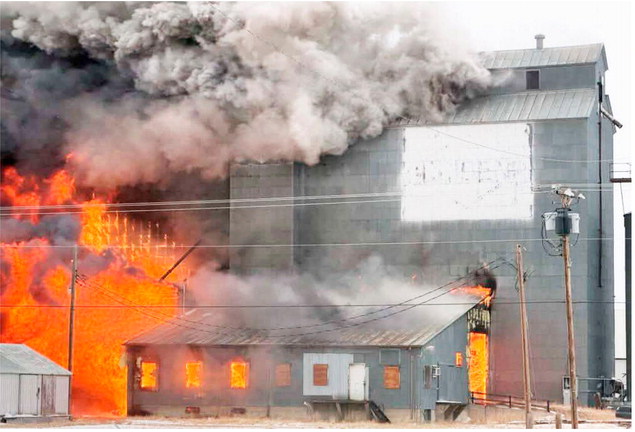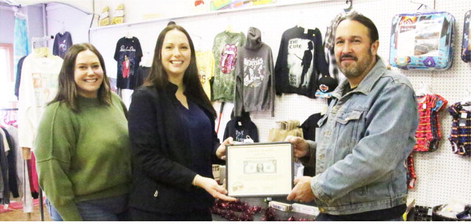Legislative Committee Hears Wildlife Crossings Bill
A bill seeking to make Montana roadways safer for motorists and wildlife by creating a $1 million pilot program for wildlife crossing structures passed out of committee last week. The House Fish, Wildlife and Parks Committee voted 13-6 to pass House Bill 887 shortly after holding a hearing on the measure.
The bill would create a fund for the design, construction, restoration, protection and study of wildlife crossings and other highway features to reduce wildlife-vehicle collisions. If passed, HB 887 would also allow the Montana Department of Transportation to accept outside sources of public or private funding, including gifts and grants, to bolster the fund.
The Center for Large Landscape Conservation, a Bozeman- based nonprofit that works on habitat connectivity, has found an 86 percent to 97 percent decrease in wildlife-vehicle collisions in locations with crossing structures, according to bill sponsor Katie Zolnikov, R-Billings. Zolnikov said a fund dedicated to wildlife crossing could allow the state to leverage its money with a four-to-one federal match to apply for some of the $350 million of federal money for wildlife crossing initiatives included in the infrastructure bill the U.S. Congress passed in 2021.
“Colorado’s put $5 million for this already, so states are taking a piece of the pie, and I think Montana should join that as well,” Zolnikov said.
Local governments could also identify areas that could benefit from a crossing structure and apply for funding, Zolnikov said, so the Montana Department of Transportation could be as “involved or not as involved as they prefer to be.”
Eight proponents and no opponents spoke about the bill at the hearing. Representatives from MDT and Montana Fish, Wildlife and Parks appeared as informational witnesses.
Speaking on behalf of the Teddy Roosevelt Conservation Partnership, Shane Scanlon said HB 887 could give the state the opportunity to turn a $1 million investment into $5 million in funding via the federal match. About 17,000 wildlife-vehicle collisions occur every year in Montana, he said, adding that an analysis by insurance company State Farm has found that Montana has the second-highest wildlife- vehicle collision rate in the United States.
Greg Munther, with the Montana Sportsmen Alliance, said crossings can save the lives of both people and wildlife, “and we should care about connecting these parts of the landscape.”
HB 887 also garnered support from the Montana Wildlife Federation, Montana Audubon, Rocky Mountain Elk Foundation, Wolves of the Rockies, the Montana Contractors Association and the American Property and Casualty Insurance Association.
During the question- and-answer period of the meeting, committee members asked Montana Department of Transportation Chief Financial Officer Larry Flynn about the cost and efficacy of crossing structures, as well as the number of projects that have been completed in the state already.
Flynn said he didn’t know how many wildlife crossings have been completed in the state or if there are any projects in the design or construction phase. He told the committee the costs depend on the specific type of accommodation.
“If we’re talking about signage or removing trees along the roadway, that’s going to be a fairly simple fix. If we’re talking overpasses, underpasses, things of that nature, they can be quite costly — in the millions if not tens of millions of dollars.” In a January 2022 conversation with Montana Free Press about wildlife crossings, MDT Environmental Services Bureau Chief Tom Martin said overpasses can cost between $1 million and $7 million, and underpasses typically run $250,000 to $600,000, Rep. Marilyn Marler, D-Missoula, referenced the extensive wildlife crossing accommodations installed along U.S. Highway 93 in the early 2000s in a question about the national and state interest in crossing structures over the past 20 years. “I feel like I heard a lot about these overpasses and underpasses for wildlife about 20 years ago — maybe that’s when they were going up on the [Confederated Salish and Kootenai Tribes] property,” she said. “Has there been a change? … Was that really popular in road engineering for a while and then it went out of phase at some national level?”
“I believe that, yes, they were kind of the rage,” Flynn answered. ‘We started building that Evaro-to-Polson corridor about 18 years ago, and that was in conjunction with the CSKT, the federal government, and of course MDT. That was a very, very important thing, especially for the tribes, to accommodate those wildlife crossings. But we have probably addressed the most significant areas. From the [chief financial officer] perspective, I’m always happy to take someone else’s money, but we feel like this is kind of a distraction in a lot of ways.”
Road ecologists say wildlife crossings are one of the best ways to reduce wildlife- vehicle collisions and mitigate one of the most significant human impacts on ecosystems. This threepart series examines regional crossing initiatives as the federal government prepares to implement a $350 million pilot project — the largest investment of its kind in U.S. history.
Prior to voting on the measure, committee members expressed a range of views about the efficacy of crossing structures. Rep. Paul Fielder, R-Thompson Falls, said he doesn’t think crossings merit the investment proposed by HB 887 on a “bang for the buck” analysis. Rep. Bob Phalen, R-Lindsay, and Rep. Ed Butcher, R-Winifred, expressed interest in fencing large sections of roadways along eastern Montana highways to separate deer from motorists.
“When it comes to eastern Montana, if you just fence roads, wildlife won’t be able to cross at all,” Rep. Jonathan Karlen, D-Missoula, countered. “If that is a method that you think is most effective, I think the fencing needs to be combined with a wildlife crossing, because that’s how animals will move from one side of the road to the other.”
“If you just do a quick Google search, you’ll see a large, large body of peer-reviewed, scientific evidence that wildlife crossings work,” Karlen added.
The bill’s hearing comes about a month after the Montana Wildlife & Transportation Partnership announced the launch of a planning tool to help local groups identify areas of need to reduce wildlife- vehicle collisions.
“Montanans care deeply about protecting our natural resources and keeping one another safe,” MDT director Malcoln Long said in a release about the project. “After years of planning, MWTP celebrates a new opportunity to further public-private partnerships that reduce wildlife and transportation conflicts and improve wildlife connectivity in Montana.”
MDT tallies more than 6,000 animal carcasses along the state’s roadways each year, and more than 10% of automotive crashes involve wildlife collisions, according to the release. Along some corridors, such as Highway 191 south of Bozeman, wild animals play a role in up to one-quarter of all collisions. HB 887 notes that 53 people died as a result of a crash involving an animal on Montana roadways between 2011 and 2020.
The tool, which was developed as part of a collaboration between MDT, FWP and Montanans for Safe Wildlife Passage, will help state agencies and local groups identify 1- to 2-mile segments of highways that could be candidates for a wildlife accommodation.

